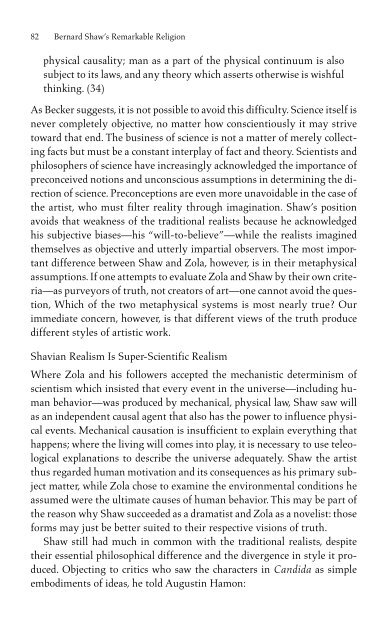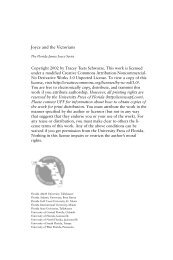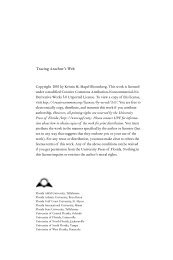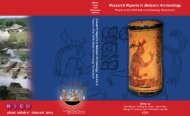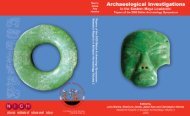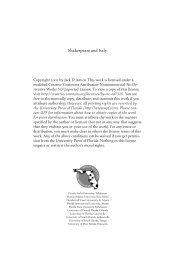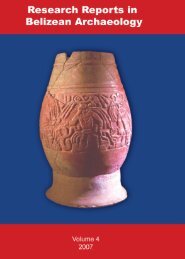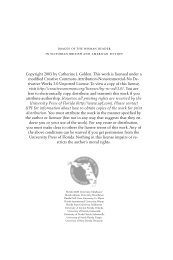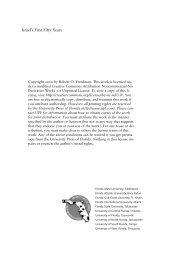Bernard Shaw's Remarkable Religion: A Faith That Fits the Facts
Bernard Shaw's Remarkable Religion: A Faith That Fits the Facts
Bernard Shaw's Remarkable Religion: A Faith That Fits the Facts
Create successful ePaper yourself
Turn your PDF publications into a flip-book with our unique Google optimized e-Paper software.
82 <strong>Bernard</strong> Shaw’s <strong>Remarkable</strong> <strong>Religion</strong><br />
physical causality; man as a part of <strong>the</strong> physical continuum is also<br />
subject to its laws, and any <strong>the</strong>ory which asserts o<strong>the</strong>rwise is wishful<br />
thinking. (34)<br />
As Becker suggests, it is not possible to avoid this difficulty. Science itself is<br />
never completely objective, no matter how conscientiously it may strive<br />
toward that end. The business of science is not a matter of merely collecting<br />
facts but must be a constant interplay of fact and <strong>the</strong>ory. Scientists and<br />
philosophers of science have increasingly acknowledged <strong>the</strong> importance of<br />
preconceived notions and unconscious assumptions in determining <strong>the</strong> direction<br />
of science. Preconceptions are even more unavoidable in <strong>the</strong> case of<br />
<strong>the</strong> artist, who must filter reality through imagination. Shaw’s position<br />
avoids that weakness of <strong>the</strong> traditional realists because he acknowledged<br />
his subjective biases—his “will-to-believe”—while <strong>the</strong> realists imagined<br />
<strong>the</strong>mselves as objective and utterly impartial observers. The most important<br />
difference between Shaw and Zola, however, is in <strong>the</strong>ir metaphysical<br />
assumptions. If one attempts to evaluate Zola and Shaw by <strong>the</strong>ir own criteria—as<br />
purveyors of truth, not creators of art—one cannot avoid <strong>the</strong> question,<br />
Which of <strong>the</strong> two metaphysical systems is most nearly true? Our<br />
immediate concern, however, is that different views of <strong>the</strong> truth produce<br />
different styles of artistic work.<br />
Shavian Realism Is Super-Scientific Realism<br />
Where Zola and his followers accepted <strong>the</strong> mechanistic determinism of<br />
scientism which insisted that every event in <strong>the</strong> universe—including human<br />
behavior—was produced by mechanical, physical law, Shaw saw will<br />
as an independent causal agent that also has <strong>the</strong> power to influence physical<br />
events. Mechanical causation is insufficient to explain everything that<br />
happens; where <strong>the</strong> living will comes into play, it is necessary to use teleological<br />
explanations to describe <strong>the</strong> universe adequately. Shaw <strong>the</strong> artist<br />
thus regarded human motivation and its consequences as his primary subject<br />
matter, while Zola chose to examine <strong>the</strong> environmental conditions he<br />
assumed were <strong>the</strong> ultimate causes of human behavior. This may be part of<br />
<strong>the</strong> reason why Shaw succeeded as a dramatist and Zola as a novelist: those<br />
forms may just be better suited to <strong>the</strong>ir respective visions of truth.<br />
Shaw still had much in common with <strong>the</strong> traditional realists, despite<br />
<strong>the</strong>ir essential philosophical difference and <strong>the</strong> divergence in style it produced.<br />
Objecting to critics who saw <strong>the</strong> characters in Candida as simple<br />
embodiments of ideas, he told Augustin Hamon:


